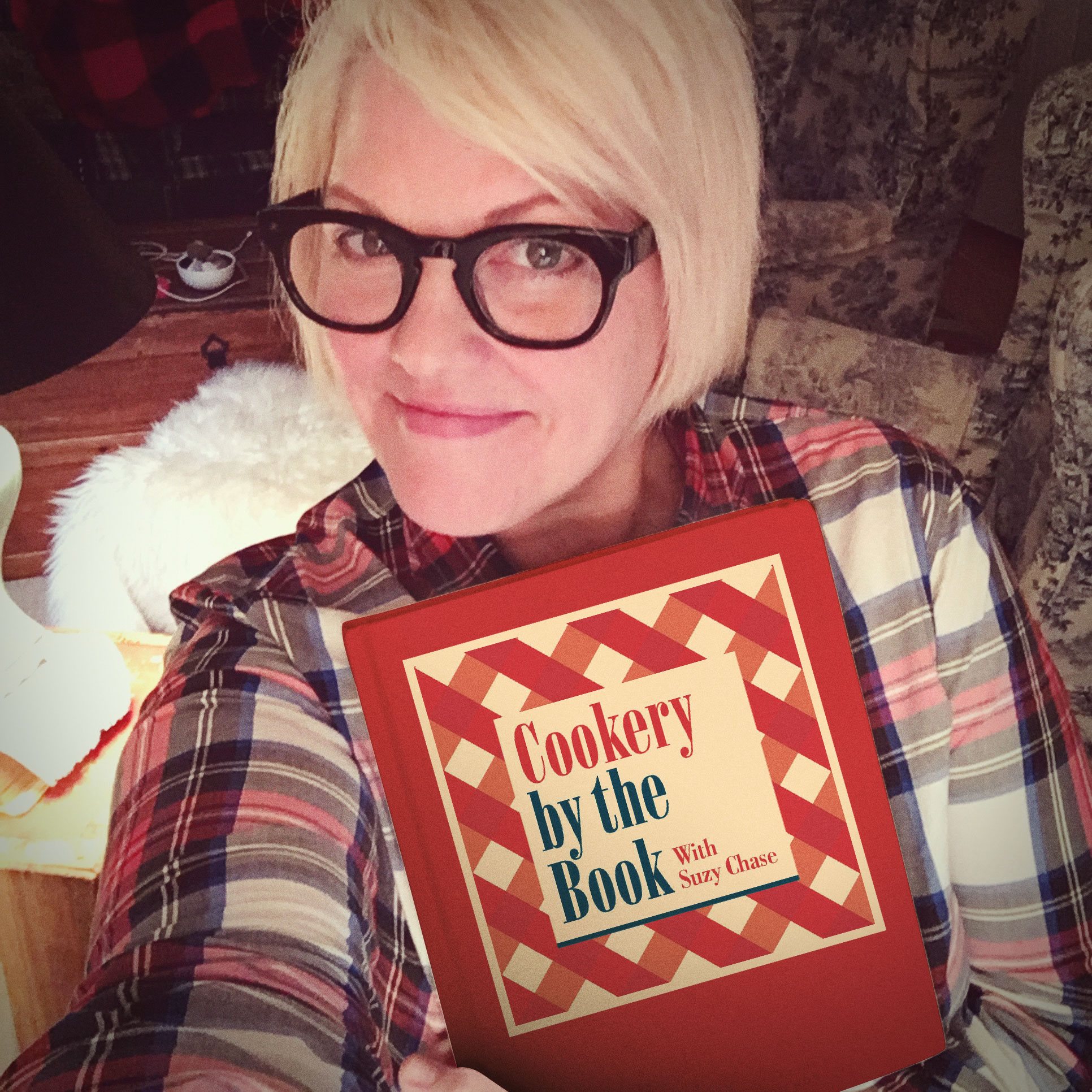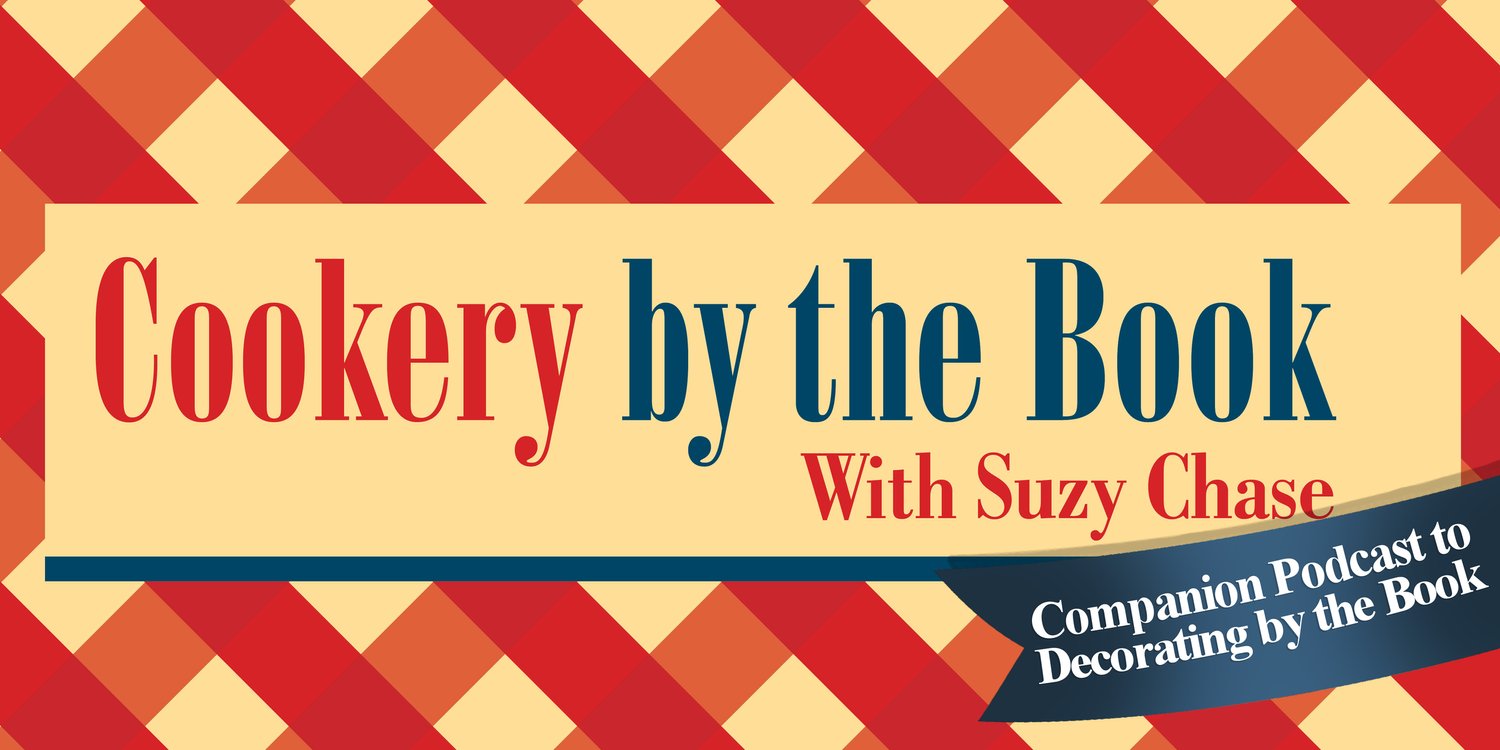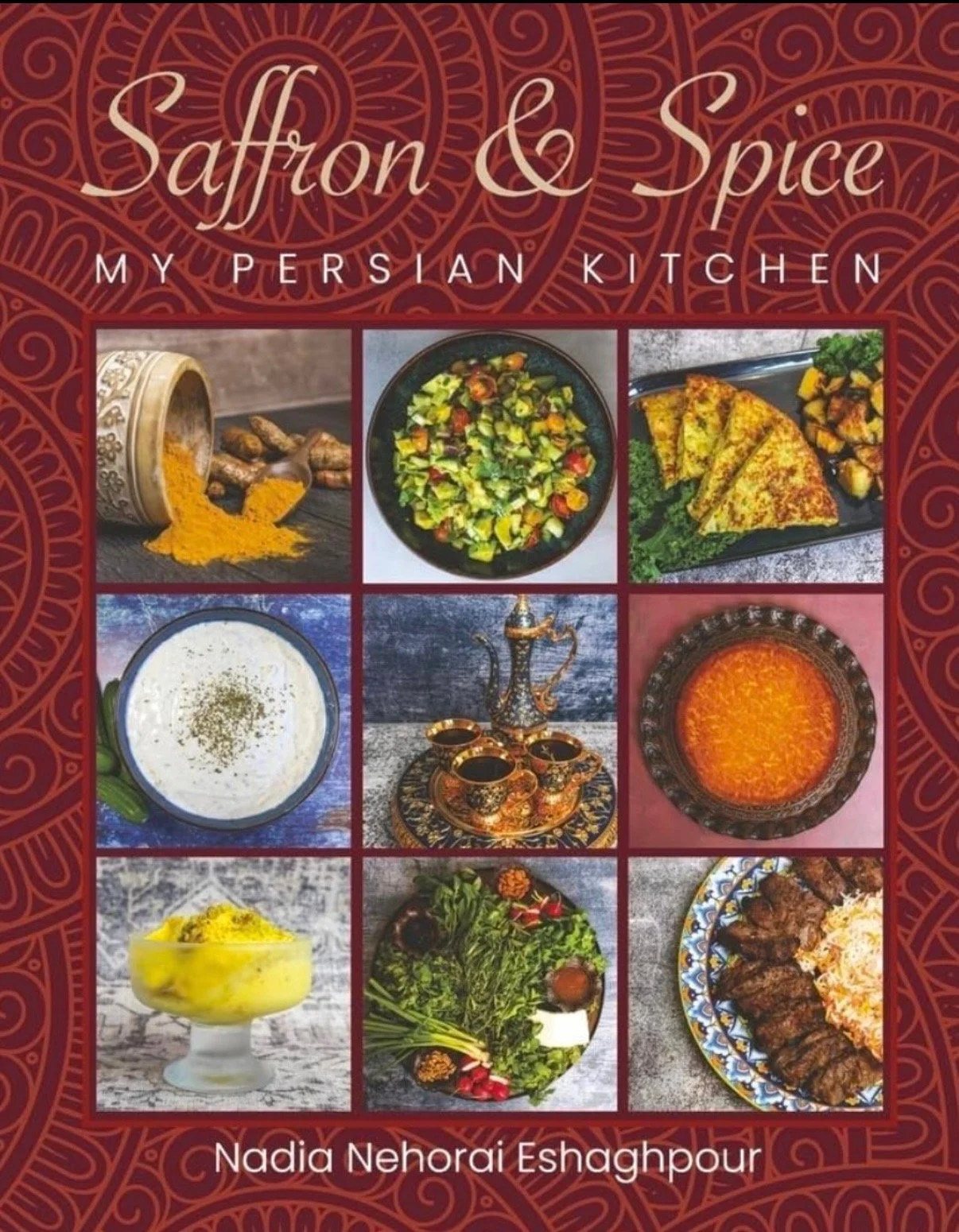Saffron & Spice | Nadia Eshaghpour
Suzy Chase: When two podcasts collide, magic happens. Welcome to Dinner Party, the podcast where I bring together my two hit shows, cookery by the book and decorating by the book around here. We're all about cooking, sharing stories behind recipes, and creating a cozy home. I'm your host, Suzy Chase, a West Village wife, mom and home cook. Inspired by Martha Stewart, trying to live in a Nora Ephron movie, surrounded by toile, plaid, cookbooks, decorating books and magazines, cooking in my galley kitchen and living my best life in my darling New York City apartment in the cutest neighborhood in the city, the West Village. So come hang out and let's get into the show.
Nadia Eshaghpour: My name is Nadia Eshaghpour. My book is Saffron & Spice: My Persian Kitchen.
Suzy Chase: Persian cuisine is renowned for its rich flavors and ancient roots. Iran's diverse geography ranging from mountains to deserts have played a major role in shaping its cuisine. It's a huge country with tremendously different regional variations, but could you speak in general about some of the dishes that in your mind exhibit the most important traits of Iranian cooking?
Nadia Eshaghpour: The main dishes will be Persian Noodle Soup, Persian Herb Stew, Herb Frittata, and Herb Rice. I would also mention the Pomegranate or Walnut Stew, which happens to be a very difficult dish to make. But if you will go to most of those Persian restaurants here or in Iran, these are the main dishes that you will see. A lot of herbs and a lot of flavor, but the flavor mostly is sour and sweet. Never, never spicy,
Suzy Chase: Never ever spicy,
Nadia Eshaghpour: Never ever. No. They're not known for spice. They're really known for the balance of sweet and sour and savory flavor.
Suzy Chase: So you just mentioned herbs and herbs are a main ingredient and not just a garnish in Persian cooking. Talk about the role herbs play in the Iranian kitchen, and you just mentioned your fresh herbs stew. I want you to talk about that too.
Nadia Eshaghpour: Persians are married to the herbs. They really are. It's the most important thing for them in the kitchen, aside from I would say saffron. Each region uses a different herbs. The fresh herbs stew is, they call it the king of all stews. Twos. It has, again, this is also each region uses different herbs, but it's mostly cilantro and parsley and fen, dried feneg Greek, and they use lime in it. And of course it's always the base made with meat or lamb or chicken, but there's always protein in it. The flavor is sour a little bit because of the lemon juice that you use in it and the dried lemon, and they always served with white rice always.
Suzy Chase: So there aren't any of those Persian dried limes in there?
Nadia Eshaghpour: Yeah, I just mentioned it. The Persian limes. Yeah, there is Persian limes in it.
Suzy Chase: On the Persian dinner table there's usually a big bowl of herbs.
Nadia Eshaghpour: Platter of always herbs, always a platter of herbs. They eat their herbs in the morning with their feta cheese. We are known to have our fetishes every morning with tarragon and whatever mint have it for lunch, for dinner. There's always a platter of herbs, fresh herbs that they eat with their food more than salad really. I remember growing up, my mom never made that much salad. It was always herbs and that's what we used to eat.
Suzy Chase: So take me back to where your culinary journey began in your mother's kitchen. Would you talk a little bit about her staple dish? Eggplant Stew. I'm familiar with a tomato-based eggplant stew, but I believe your mom used grapes,
Nadia Eshaghpour: We call it Khoresh Bademjan in Persian, which is a Persian Eggplant Stew. We use the sour grapes, which are the young unripe grapes. It adds a tartness to the stew, not a lot, a little bit, and you can always purchase them in Middle Eastern stores or online. A lot of people use the sour grape when you want to have a sour dish, they use that.
Suzy Chase: If someone is completely new to Persian cuisine, what dish out of the cookbook would you recommend that they try to truly capture the essence?
Nadia Eshaghpour: I'll always go back to that same dish. The fresh herbs stew. The flavor is so unbelievable and it's truly the, I would say, the most popular dish of Iran with white rice and the crust of the white rice.
Suzy Chase: Persian cuisine loves that acidity and the earthiness and the herbs, but you take your rice very seriously. It's the main grain at the table and the art of tahdig crispy layer of rice is both a technical challenge and a point of pride. So let's start with the bottom, literally. So what does it take to master tig and why is it such a beloved part of Persian
Nadia Eshaghpour: Meals? Well, first of all, tahdig, which means, TA means bottom, and DIG means the pot. So that's how this name came about. It's known to be the prize of the rice when you have it on the table, there is no way you will ever have any piece left because people just gravitate to go in towards it and have it to master the perfect tahdig. You need to use a non-stick pot always. Of course, you need to use basmati rice. You need oil, and never be shy with the oil. You have to really cover the bottom, because what's static? It's really crispy and it's really the fried rice really. And tig is infused with saffron, and it takes time. I mean, I wrote the timing in my book, but each stuff top would be different. Usually it's on high till you see the steam come up, then you put it on medium, and then once the rice is ready, most probably the tahdig is ready as well.
Suzy Chase: One recipe that is particularly interesting to me is your Pomegranate Soup on page 79. There's so many interesting flavors in the soup, turmeric, mint vegetable stock, pomegranate molasses. Could you describe this dish? I'm wondering if it's seedy or if it's smooth.
Nadia Eshaghpour: It looks like a stew more than a soup. It's thick. It's very thick, and it's a very popular dish on Yalda night. Yalda night is the longest night of the year, which people make this particular stew and enjoy it. The soup is loaded with herbs and rice and yellow split beans. But of course, the most important ingredient is the pomegranate mosses inside of it. It's not seedy. It's not, and it gives that sort of a tanginess to it. I mean, you do chew the rice a little bit, but everything is kind of together. It's already mushy. So no, it's not cdy at all. It's so good. Is it really sour? Oh my God, it's heavenly granite molasses is amazing. Really it is. I mean, we use that a lot in our dishes. There is sweet and sour taste to it.
Suzy Chase: What message do you have for a home cook who's hesitant to dive into Persian cooking?
Nadia Eshaghpour: It's so much fun. Cooking is fun, and you have to say to yourself, Hey, you know what? So what? I mess up, so what? But I always say, pick the easiest recipe first. Familiarize yourself with the ingredients. Make sure you have all the ingredients in front of you, and just dive in it.
Suzy Chase: Now for my segment called The Perfect Bite, where I ask you to describe your perfect bite of a favorite dish.
Nadia Eshaghpour: Oh my God, my goodness. I would say the Persian Noodle Soup. It's a soup that is usually for the new year, the Persian New Year, or for happy celebratory occasions. It has the Persian noodles in it, and it has beans, and of course herbs. To me, what makes it so addictive is the layer after you make it, you put the liquid way in it and the fried mint and fried onion on top and just, I think it's heavenly and it's a very well liked dish in Iran and in America.
Suzy Chase: Where can we find you on the web and social media?
Nadia Eshaghpor: Saffron and Spice slash Nadia, and then my website is saffron spice nadia.com.
Suzy Chase: Well, I think anyone can start making Persian food with your cookbook. Thank you so much for coming on Dinner Party podcast.
Nadia Eshaghpour: It was amazing and it was so nice to meet you, and I thank you and it was pleasure. Thank you so much.
Suzy Chase: Okay, so where can you listen to the new Dinner Party podcast series? Well, it's on substack suzy chase.substack.com. You can also subscribe to Dinner Party for free on Spotify and Apple Podcasts. Additionally, the episodes will be available on both Decorating by the Book and Cookery by the Book. Long story short, you'll be able to listen to it virtually everywhere. Thanks for listening. Bye.




